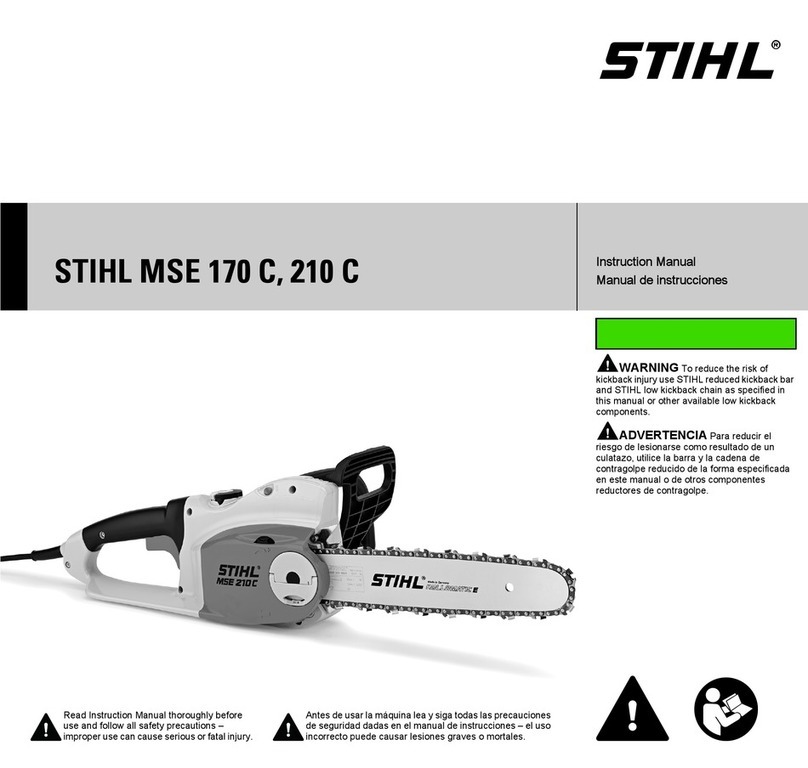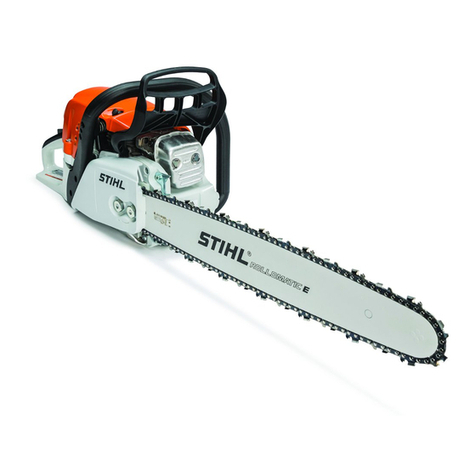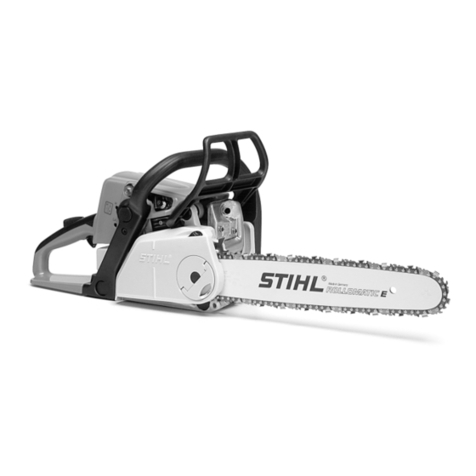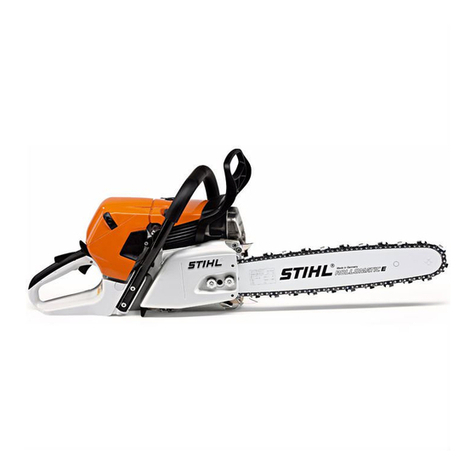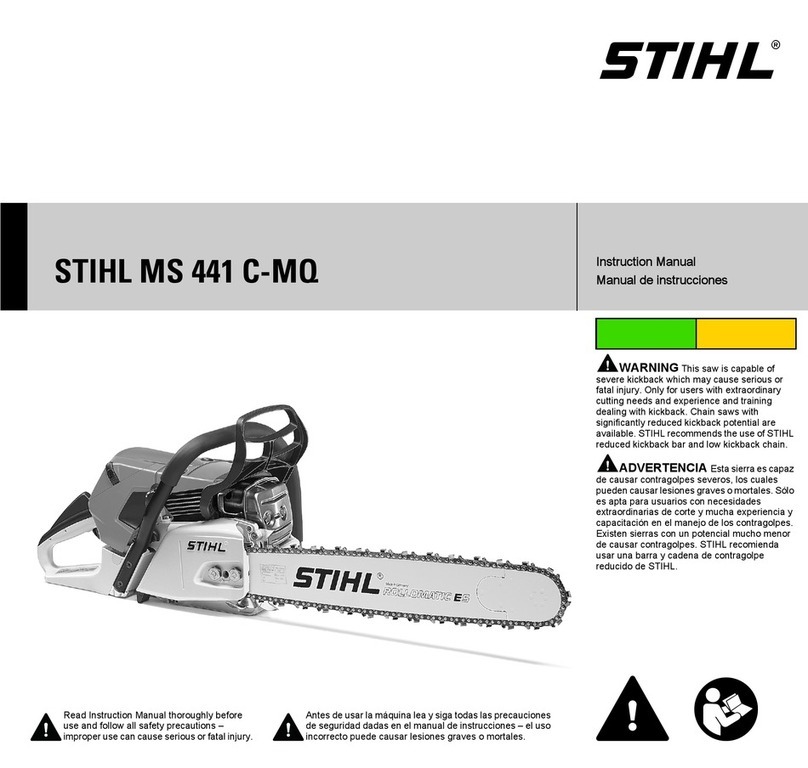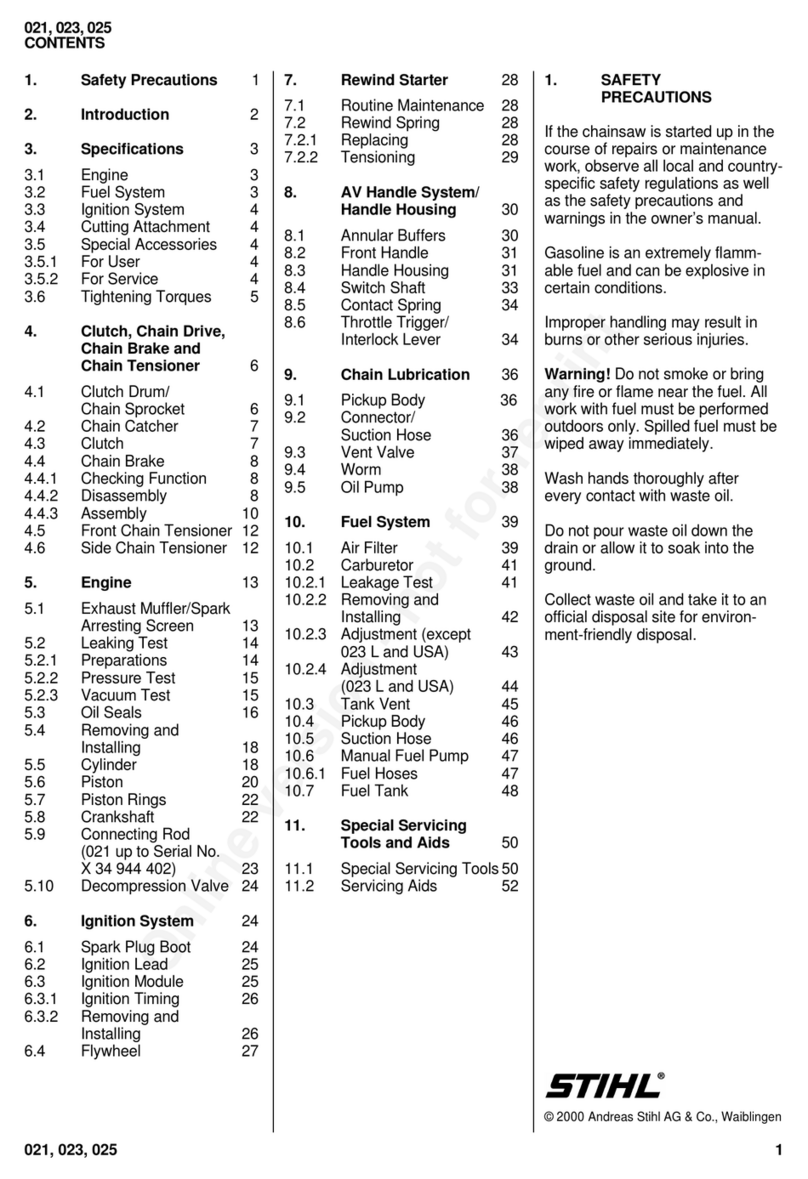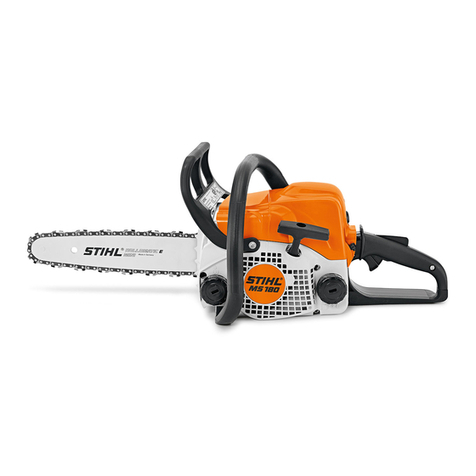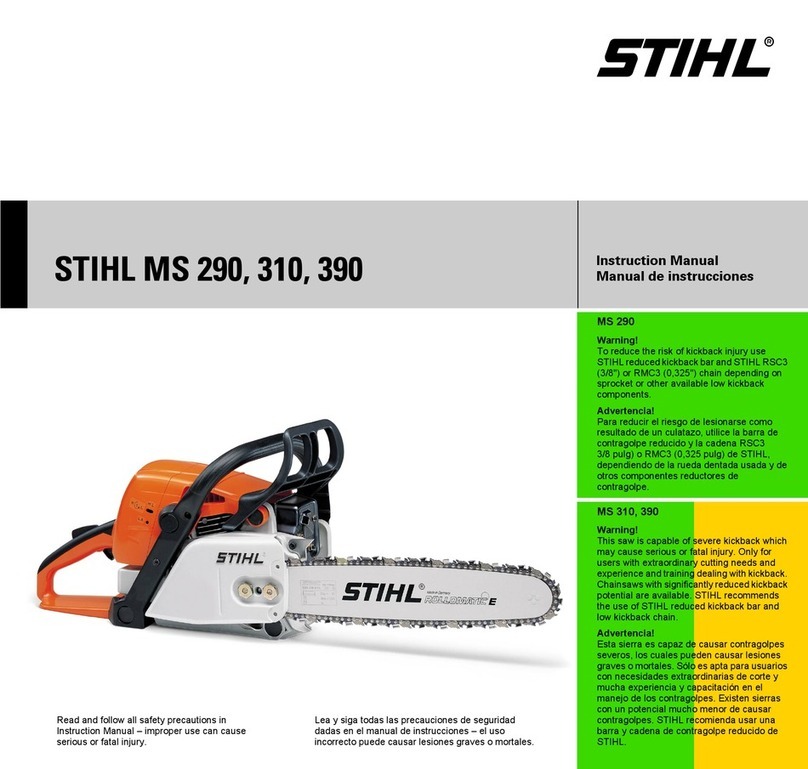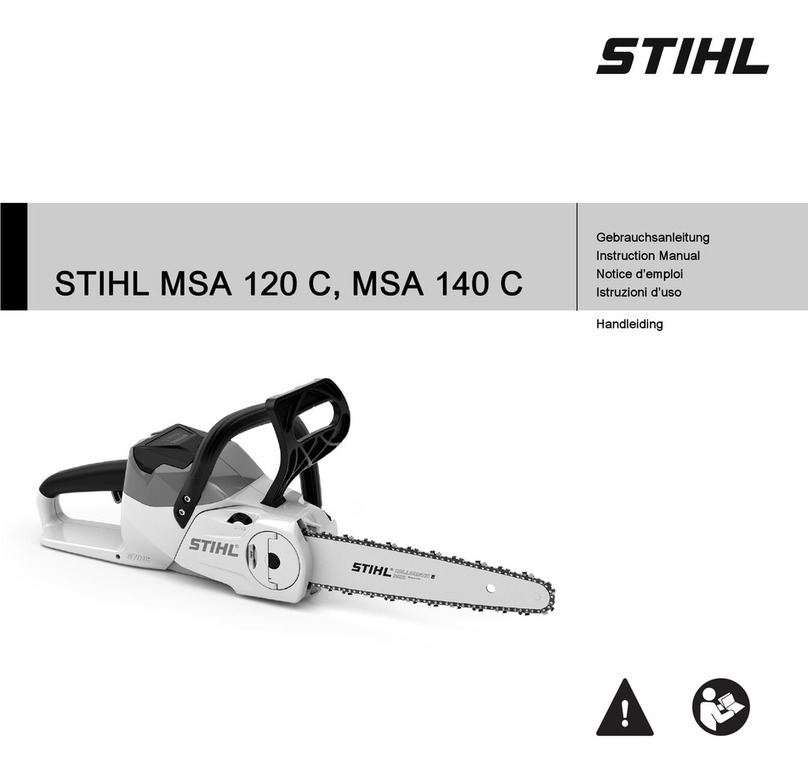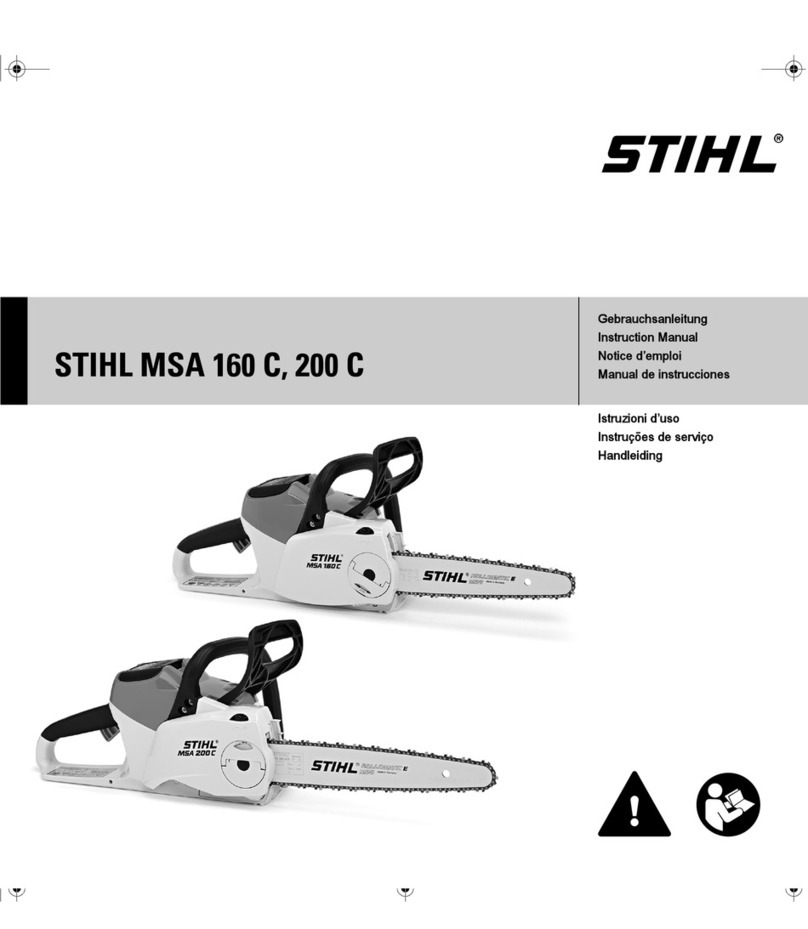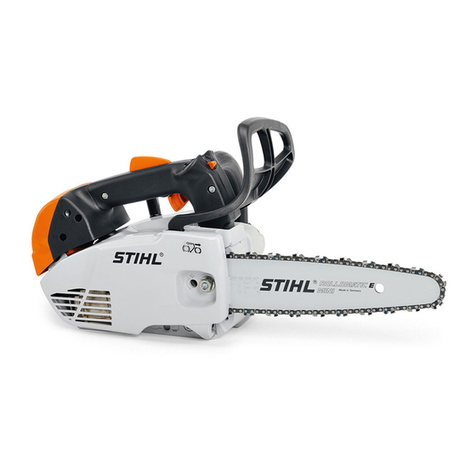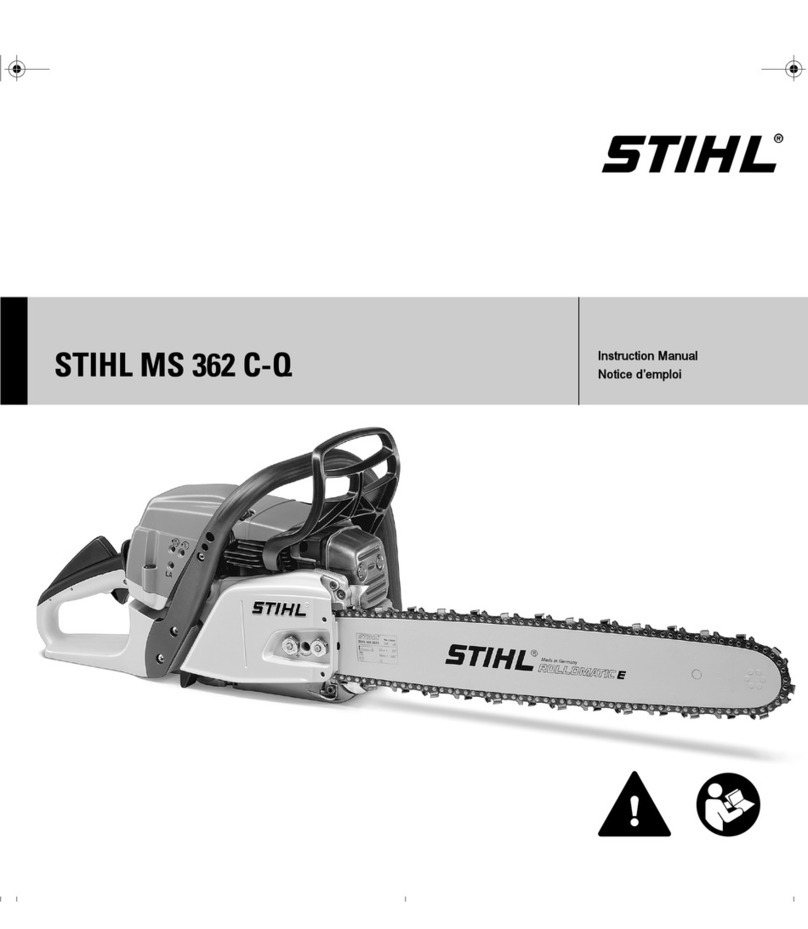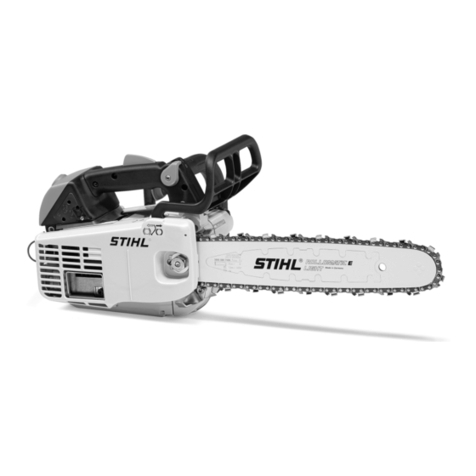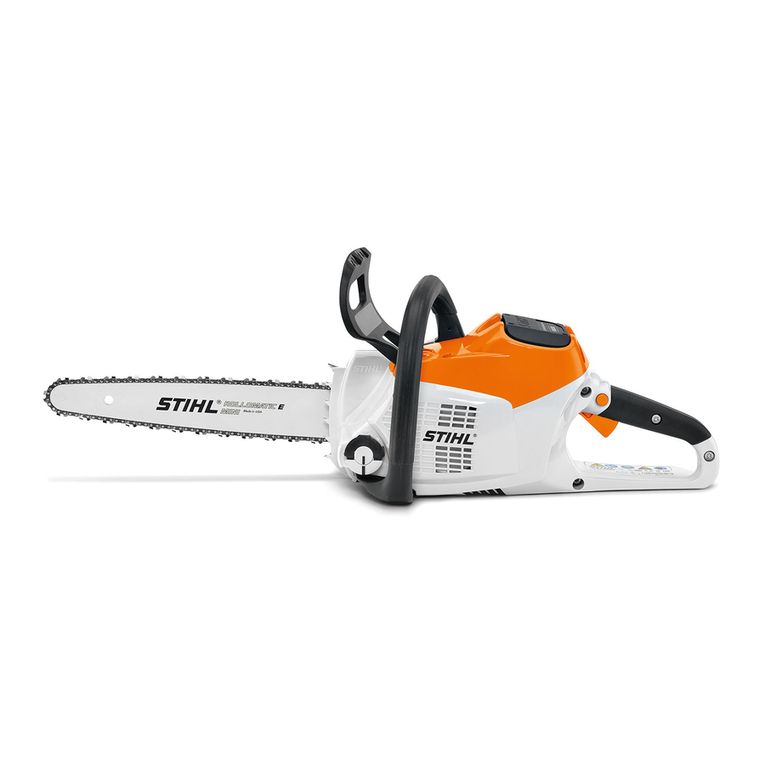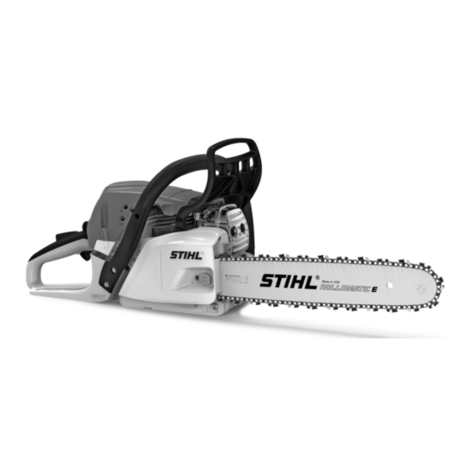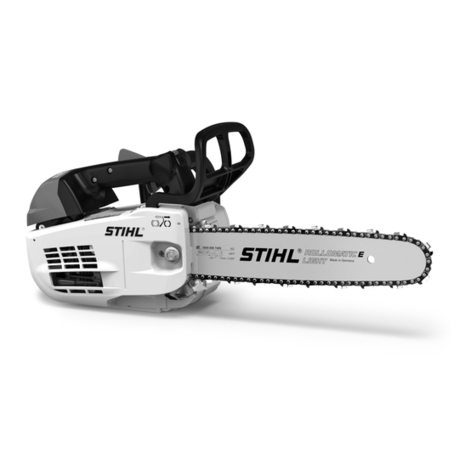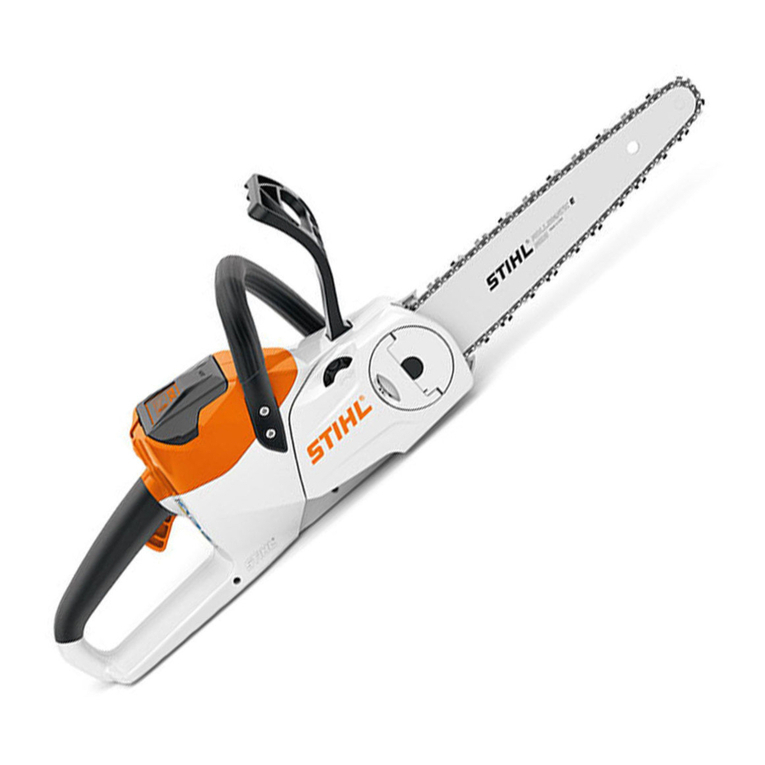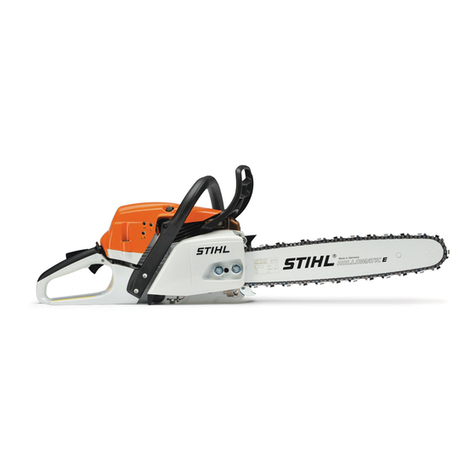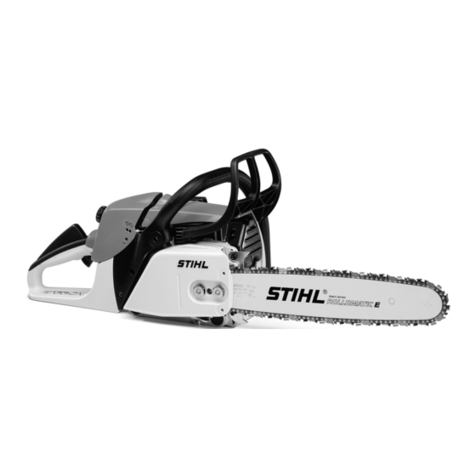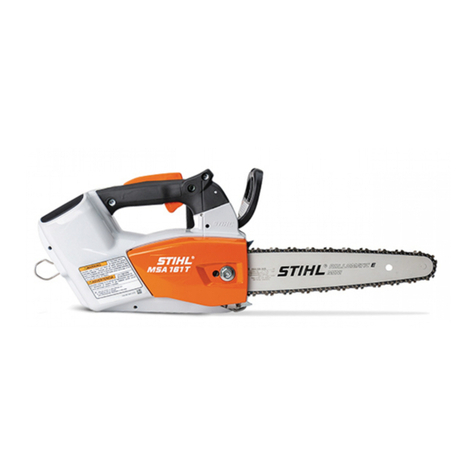
Original Instruction ManualPrinted on chlorine-free paper
Printing inks contain vegetable oils, paper can be recycled.
© ANDREAS STIHL AG & Co. KG 2018
0458-729-8221-A. VA2.E18.
0000007662_005_GB
0458-729-8221-A
English
1
{This instruction manual is protected by copyright. All rights reserved, especially the rights to reproduce, translate and process
with electronic systems.
Contents
1 Introduction
. . . . . . . . . . . . . . . . . . . . . . . . . . . . . . . . . . . . . . . . .
2
2 Guide to Using this Manual
. . . . . . . . . . . . . . . . . . . . . . . . . .
2
2.1 Signal Words
. . . . . . . . . . . . . . . . . . . . . . . . . . . . . . . . . . . . . . . .
2
2.2 Symbols in Text
. . . . . . . . . . . . . . . . . . . . . . . . . . . . . . . . . . . . .
3
3 Main Parts
. . . . . . . . . . . . . . . . . . . . . . . . . . . . . . . . . . . . . . . . . .
3
3.1 Chain Saw
. . . . . . . . . . . . . . . . . . . . . . . . . . . . . . . . . . . . . . . . . .
3
4 Safety Symbols on the Products
. . . . . . . . . . . . . . . . . . . . .
4
4.1 Chain Saw
. . . . . . . . . . . . . . . . . . . . . . . . . . . . . . . . . . . . . . . . . .
4
5 IMPORTANT SAFETY INSTRUCTIONS
. . . . . . . . . . . . .
5
5.1 Intended Use
. . . . . . . . . . . . . . . . . . . . . . . . . . . . . . . . . . . . . . . .
5
5.2 Operator
. . . . . . . . . . . . . . . . . . . . . . . . . . . . . . . . . . . . . . . . . . . .
5
5.3 Personal Protective Equipment
. . . . . . . . . . . . . . . . . . . . . .
6
5.4 Chain Saw
. . . . . . . . . . . . . . . . . . . . . . . . . . . . . . . . . . . . . . . . . .
7
5.5 Power Supply Cord and Extension Cord
. . . . . . . . . . . . .
8
5.6 Using the Chain Saw
. . . . . . . . . . . . . . . . . . . . . . . . . . . . . . . .
9
6 Kickback and Other Reactive Forces
. . . . . . . . . . . . . . .
15
6.1 Reactive Forces
. . . . . . . . . . . . . . . . . . . . . . . . . . . . . . . . . . . .
15
6.2 Kickback
. . . . . . . . . . . . . . . . . . . . . . . . . . . . . . . . . . . . . . . . . . .
15
6.3 Pull-in
. . . . . . . . . . . . . . . . . . . . . . . . . . . . . . . . . . . . . . . . . . . . . .
20
6.4 Pushback
. . . . . . . . . . . . . . . . . . . . . . . . . . . . . . . . . . . . . . . . . .
20
7 Proper Techniques for Basic Bucking, Limbing,
Pruning and Felling
. . . . . . . . . . . . . . . . . . . . . . . . . . . . . . . .
21
7.1 Intended Uses
. . . . . . . . . . . . . . . . . . . . . . . . . . . . . . . . . . . . . .
21
7.2 Bucking
. . . . . . . . . . . . . . . . . . . . . . . . . . . . . . . . . . . . . . . . . . . .
21
7.3 Limbing
. . . . . . . . . . . . . . . . . . . . . . . . . . . . . . . . . . . . . . . . . . . .
22
7.4 Pruning
. . . . . . . . . . . . . . . . . . . . . . . . . . . . . . . . . . . . . . . . . . . .
23
7.5 Cutting Logs Under Tension
. . . . . . . . . . . . . . . . . . . . . . . .
23
7.6 Felling
. . . . . . . . . . . . . . . . . . . . . . . . . . . . . . . . . . . . . . . . . . . . .
24
8 Maintenance, Repair and Storage
. . . . . . . . . . . . . . . . . .
27
8.1 Warnings and Instructions
. . . . . . . . . . . . . . . . . . . . . . . . . .
27
9 Before Starting Work
. . . . . . . . . . . . . . . . . . . . . . . . . . . . . . .
28
9.1 Preparing the Chain Saw for Operation
. . . . . . . . . . . . .
28
10 Assembling the Chain Saw
. . . . . . . . . . . . . . . . . . . . . . . . .
29
10.1 Cutting Attachment
. . . . . . . . . . . . . . . . . . . . . . . . . . . . . . . .
29
10.2 Mounting and Removing the Guide Bar and Saw
Chain
. . . . . . . . . . . . . . . . . . . . . . . . . . . . . . . . . . . . . . . . . . . . . .
29
10.3 Tensioning the Saw Chain
. . . . . . . . . . . . . . . . . . . . . . . . .
31
10.4 Lubricating the Saw Chain and Guide Bar
. . . . . . . . . .
31
11 The Chain Brake
. . . . . . . . . . . . . . . . . . . . . . . . . . . . . . . . . . .
33
11.1 Engaging the Chain Brake
. . . . . . . . . . . . . . . . . . . . . . . . .
33
11.2 Disengaging the Chain Brake
. . . . . . . . . . . . . . . . . . . . . .
33
11.3 Maintaining the Chain Brake
. . . . . . . . . . . . . . . . . . . . . . .
33
12 Overload Cutout
. . . . . . . . . . . . . . . . . . . . . . . . . . . . . . . . . . .
34
12.1 Resetting the Overload Cutout
. . . . . . . . . . . . . . . . . . . . .
34
13 Switching the Chain Saw On and Off
. . . . . . . . . . . . . . .
34
13.1 Switching On
. . . . . . . . . . . . . . . . . . . . . . . . . . . . . . . . . . . . . .
34
13.2 Switching Off
. . . . . . . . . . . . . . . . . . . . . . . . . . . . . . . . . . . . . .
35
14 Checking the Chain Saw
. . . . . . . . . . . . . . . . . . . . . . . . . . .
35
14.1 Checking the Operation of the Chain Brake
. . . . . . . .
35
14.2 Testing the Controls
. . . . . . . . . . . . . . . . . . . . . . . . . . . . . . .
36
14.3 Testing Saw Chain Lubrication
. . . . . . . . . . . . . . . . . . . . .
36
15 After Finishing Work
. . . . . . . . . . . . . . . . . . . . . . . . . . . . . . .
37
15.1 Preparing for Transportation or Storage
. . . . . . . . . . . .
37
16 Transporting
. . . . . . . . . . . . . . . . . . . . . . . . . . . . . . . . . . . . . . .
37
16.1 Transporting the Chain Saw
. . . . . . . . . . . . . . . . . . . . . . . .
37
17 Storing
. . . . . . . . . . . . . . . . . . . . . . . . . . . . . . . . . . . . . . . . . . . . .
38
17.1 Storing the Chain Saw
. . . . . . . . . . . . . . . . . . . . . . . . . . . . .
38
18 Cleaning
. . . . . . . . . . . . . . . . . . . . . . . . . . . . . . . . . . . . . . . . . . .
38
18.1 Cleaning the Chain Saw
. . . . . . . . . . . . . . . . . . . . . . . . . . .
38
18.2 Cleaning the Guide Bar and Saw Chain
. . . . . . . . . . . .
38
19 Inspection and Maintenance
. . . . . . . . . . . . . . . . . . . . . . .
39
19.1 Inspection and Maintenance Chart
. . . . . . . . . . . . . . . . .
39
19.2 Inspecting and Maintaining the Chain Saw
. . . . . . . . .
39
19.3 Inspecting and Maintaining the Chain Sprocket
. . . . .
40
19.4 Inspecting and Maintaining the Guide Bar
. . . . . . . . . .
40
